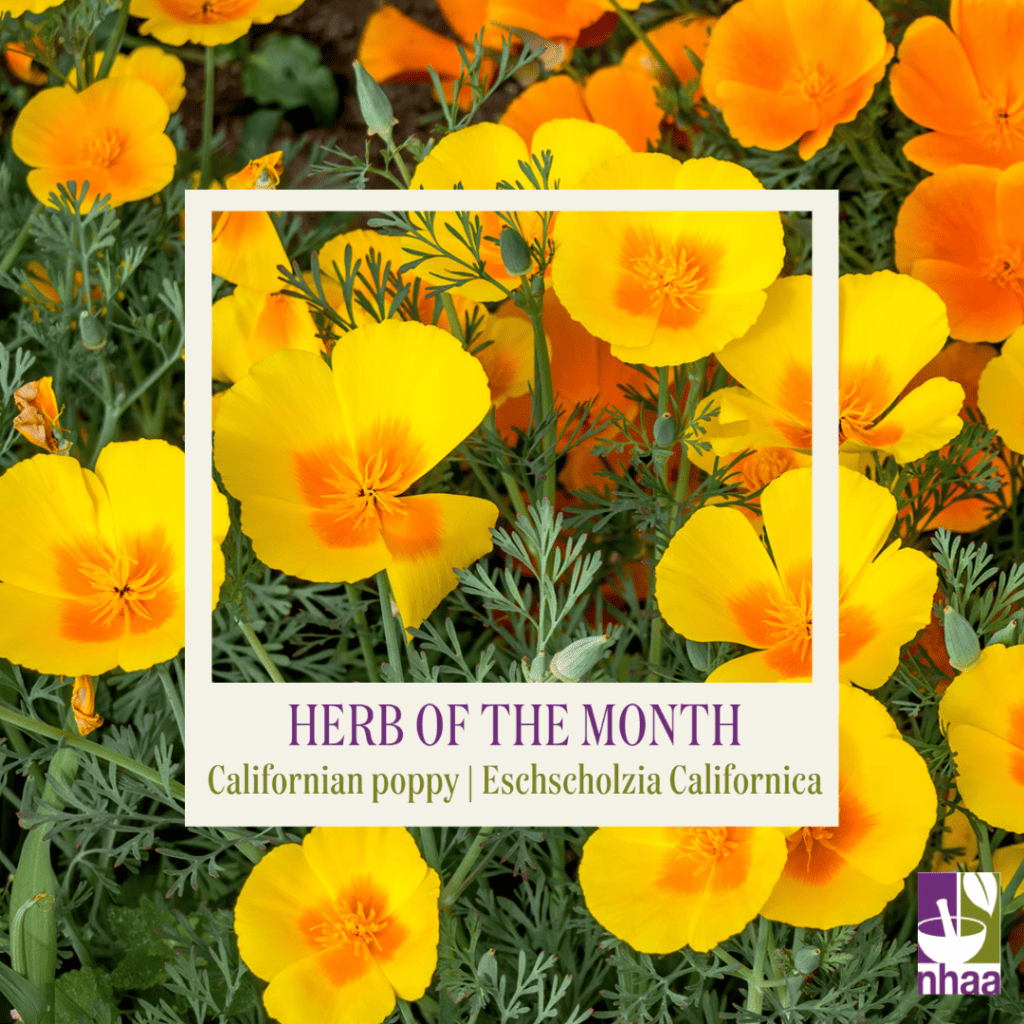
🌿 This month’s herb of the month is the Californian poppy or Eschscholzia californica.
Family: Papaveraceae
🌿 Botanical name and description
Eschscholzia californica (Californian Poppy) is native to Northern America and Mexico yet is an ornamental in gardens worldwide; or may even be considered invasive (1). The North American state of California proclaims this herb as the ‘state’ flower (2), fast easily growing and slender with blue-green leaves growing to 60 cm tall. An annual or perennial, Californian poppy flowers throughout spring and summer (3), the solitary flowers bloom bright orange, which can vary in shades of yellow and red. The herb is gathered during flowering and the ariel parts are used for medicinal purposes.
🌿 History and traditional use
Highly prized by the native North Americans, being introduced into English gardens in the 19th century (2), Californian poppy, was used as a decoction to treat insomnia, to reduce anxiety, as a children’s sedative for bedwetting and as an antispasmodic (4). Other uses were adopted as an analgesic for toothache and headaches and in a compress in wound healing plus having topical use of the crushed seeds to cease lactation (3).
🌿 Actions and usage
Californian poppy promotes action on the nervous system, often marketed as a relaxant and sleep enhancer, predominantly due to the effects of the alkaloid constituents; higher concentrations are found in the roots (4). Documented actions include a sedative, analgesic, and anxiolytic yet antimicrobial and anticancer potentials have also been considered (3). Californian poppy is mainly used to treat anxiety, insomnia, emotional stress, panic attacks, neuropathy and as pain management for nerve-generated pain. When using this herb please consider individual constitution, Californian poppy is a cooling herb (5). No major safety issues have been identified with use.
🌿 Science and clinical trials
Research on the Californian poppy has been driven by the potential medicinal properties of the alkaloid constituents, though many studies are on animals or in-vitro. A double-blind randomised placebo-controlled study of a fixed combination containing two plant extracts (one being Californian poppy) explored effects in mild-to-moderate anxiety disorders (6).
References
1. Becker A, Yamada Y, Sato F. California poppy (Eschscholzia californica), the Papaveraceae golden girl model organism for evodevo and specialized metabolism. Front Plant Sci. 2023;14:1084358.
2. United States Department of Agriculture [USDA]. California Poppy (Eschscholzia californica) 2023 [Available from: https://www.fs.usda.gov/wildflowers/plant-of-the-week/eschscholzia_californica.shtml#:~:text=California%20poppy%2C%20the%20state%20flower%20of%20California%2C%20is,under%20the%20command%20of%20Lieutenant%20Otto%20von%20Kotzebue.
3. Fisher C. Materia medica of Western herbs: Aeon Books; 2018.
4. Al-Snafi AE. ESCHSCHOLZIA CALIFORNICA: A PHYTOCHEMICAL AND PHARMACOLOGICAL-REVIEW. INDO AMERICAN JOURNAL OF PHARMACEUTICAL SCIENCES. 2017;4(2):257-63.
5. Henriette’s Blog. Eschscholzia californica 2011 [Available from: https://www.henriettes-herb.com/blog/hotw-cali-poppy.html.
6. Hanus M, Lafon J, Mathieu M. Double-blind, randomised, placebo-controlled study to evaluate the efficacy and safety of a fixed combination containing two plant extracts (Crataegus oxyacantha and Eschscholtzia californica) and magnesium in mild-to-moderate anxiety disorders. Curr Med Res Opin. 2004;20(1):63-71.